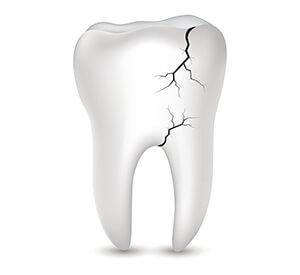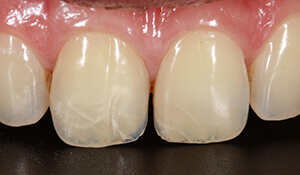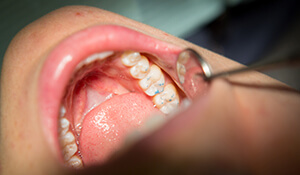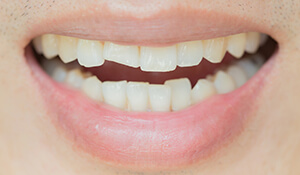Richardson Broken Teeth Repair
 Unless a dental crack is on the surface of the tooth, you may not have any adverse effects at all, but many patients experience a variety of symptoms. These side effects may include pain or discomfort when pressure is placed on the tooth while chewing, smiling, or cleaning. Others experience sensitivity to hot or cold foods and beverages. In other situations, patients will experience a constant, throbbing pain, or a sporadic pain that does not seem directly related to any specific behavior.
Unless a dental crack is on the surface of the tooth, you may not have any adverse effects at all, but many patients experience a variety of symptoms. These side effects may include pain or discomfort when pressure is placed on the tooth while chewing, smiling, or cleaning. Others experience sensitivity to hot or cold foods and beverages. In other situations, patients will experience a constant, throbbing pain, or a sporadic pain that does not seem directly related to any specific behavior.
When cracked pieces of the tooth shift inside the tooth, they may access and irritate or damage the interior pulp layer of the tooth. When this occurs, you’ll likely need endodontic therapy of some kind to relieve pain and discomfort, avoid further dental damage, and fully renew the strength and function of the cracked tooth.
Types of Tooth Cracks
 Craze lines
Craze lines
These are possibly the most common form of tooth crack, especially in adults. They occur on the surface tooth enamel. In most cases, these cracks don’t need any treatment at all and cause no concerns.
 Fractured Cusp
Fractured Cusp
The cusps are the raised areas on the biting surfaces of teeth. When one or more cusp is fractured, you are unlikely to experience any damage to the interior portion of your tooth, so root canal will be unnecessary. However, depending on the size of the cusp, you will need either a filling or a crown to repair the damage.
 Cracked Tooth
Cracked Tooth
Beginning as a small crack in the biting surface of the tooth, the crack moves into the center of the tooth towards the pulp and root. This crack may be visible on the surface of the tooth or unseen inside of the tooth, and they can extend below the gum line. If the crack extends into the tooth root, the result will likely be the need for a root canal procedure. Left untreated, the crack can worsen, and you may lose all or part of the tooth.
 Split Tooth
Split Tooth
The result of an untreated cracked tooth is often a complete split. When this occurs, the tooth is completely separated into two distinct sections, and we are not able to save the entire tooth. In some cases, we are able to save one part of the tooth. It depends largely on whether or not there is adequate root structure remaining to support a restoration. When possible, we can perform a root canal to remove the damaged tissue, and partner with your general dentist to complete a dental crown restoration.
 Vertical Root Fracture
Vertical Root Fracture
This type of fracture starts within the root system, and it is very rare. Beginning in the bottom half of the tooth, the fracture then works its way upward toward the top of the tooth. Because you can’t see the fracture, they typically go completely unnoticed until they access the nerve tissue inside the pulp. In some cases, we’re able to remove and replace the fractured part of the tooth root, and restore the tooth. Otherwise, we may need to recommend extraction.
More to Explore
Endodontics Periodontal Care Orthodontics View All Our Services
